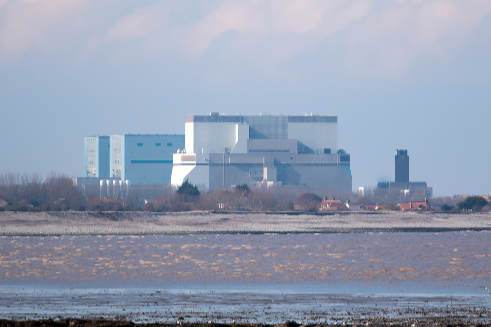It is anticipated that the £18 billion project Hinkley Point power station will begin electricity generation some time in 2025 and should provide 7 per cent of the UK’s total energy requirements.
It’s one of the largest infrastructure projects ever commissioned in this country since the Eurotunnel was developed. The project is designed to ‘keep the lights on’, reducing the reliance on third-party fuels whilst replacing decommissioned energy plants and hitting environmental targets.
Balancing supply and demand
Although most of the UK’s generation of energy occurs locally, some 46 per cent of the fuels used are imported. The continued decline of North Sea gas reserves means we are at the mercy of other countries for supply and pricing as demand increases. Additionally, of the 16 active UK nuclear power stations, all but one are being shut down over the next ten years, so this investment is important on many levels.
Over the past 20 years, the UK has invested heavily in renewable energy projects that now provide up to 25 per cent of demand. But that target is only met if the sun is shining or the wind blowing, so a controlled mix of sources is needed to balance the strategic risk of matching supply and demand.
The plan comes together – with some concerns
If you step back from some of the issues surrounding the project, it’s an essential part of a real long-term vision to ensure the country can generate enough energy for all homes and businesses. As it’s still a small portion of what’s required, be aware that other announcements are surely to follow over the coming years to complete the picture.
The initial negative reactions to the announcement, apart from the eye-watering cost of the project, fall into two distinct groups.
Ownership of the infrastructure
Firstly, the main investment comes from the French-owned EDF Company. One third of the cost being supplied by a Chinese consortium. At least 60 per cent of the investment cost will flow into the UK construction industry, but the ownership of the plant remains outside of the UK’s control. A small change made by the government to the scheme has a built-in ‘golden share’ to prevent the sale to another third-party without their consent.
Although the deal is now ‘done’, the taxpayer won’t be saddled with the £18 billion capital cost, but could face higher bills once energy production commences.
Retail prices
Most of us want to know what it means for us from a personal or financial standpoint. Decisions made in government are only an issue if they affect our daily lives! So what could the potential impact of the electricity generated from Hinkley be for a small business owner?
Our energy bills are made up of five key elements: wholesale price, transmission costs, supplier operating costs, taxes, and supplier profit margins. The wholesale price makes up roughly 42 per cent of our total bill.
Suppliers either generate the energy they provide to us or buy it on the open market. Either way, the price per MWh they build into their bills is similar.
Currently the wholesale electricity market price is stable at £38/MWh and has been under £50/MWh for the past six years.
The Hinkley Point deal struck guarantees an index-linked wholesale price of £92.50/MWh at 2012 prices for 35 years. Based on inflation from the past four years, this cost is now nearly 10 per cent higher than the headline rate at £101.57/MWh – nearly three times the current market price.
Sure, we didn’t need to stump up for the initial investment, and that price is ‘guaranteed’ for 35 years so forecasts are easier, but that’s a huge premium over today’s rates.
The potential impact on a bill
Given that it’s only forecast to be 7 per cent of the energy demand, what impact could it make to a typical business electricity bill of £2,600 per annum?
If we assume 7 per cent of the market receives the Hinkley Point energy at £101.57/MWh with the rest at the current price of £38/MWh, the new market average price would be £42.45. That’s an increase of nearly 12 per cent.
As 42 per cent of a bill comes from the wholesale market, the increase would actually be 4.7 per cent or £122 a year for a typical business. With the Retail Price Index (RPI) running at 1.6 per cent, that’s not as bad as some of the headlines are making it seem.
Governments apply all types of levies for investment projects onto our energy bills. For example, the current Climate Change Levy (CCL) already adds 5 per cent to a bill on its own and is rising by 51 per cent over the next four years.
So perhaps it really is a small price to pay to ensure our island nation is able to provide stable electricity for the future demands we know lie ahead.
The future effect
It does appear that the project is accepted as a necessary evil for today’s post-Brexit environment, which could mean more deals like this would be put forward to ease the energy requirements of the country.
It’s imperative the government plans ahead for the demand requirements of the UK, and this project is just part of the total picture. In hindsight, the project could become the star investment, but it could also be a white elephant fuelling price inflation. Only time will tell one way or another.
Jason Smith manages Business Electricity Prices.





